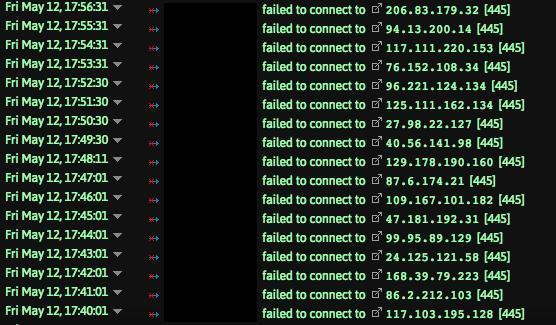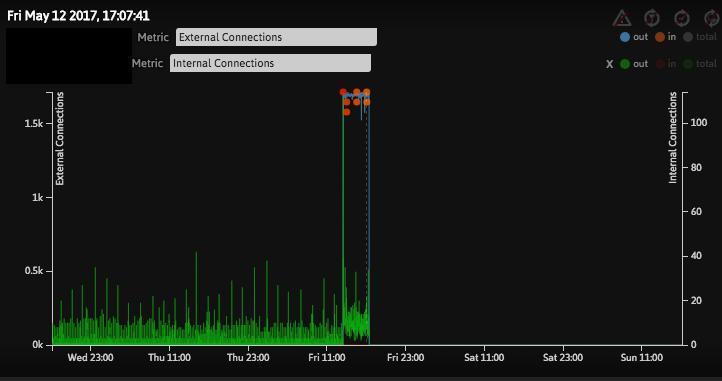Over 200,000 organisations and private individuals were victims of Friday’s global cyber-attack. This number is likely to increase over the coming weeks, as copy-cat criminals develop variants of the same ransomware and new methods of delivering similar attacks.
Some background on the WannaCry campaign
The WannaCry outbreak does not appear to have targeted specific countries or industries. Instead, it targeted outdated computer systems, using exploit kits leaked earlier this year to infect devices and drop the initial ransomware file. Once inside a network, WannaCry will attempt to locate other vulnerable computers by conducting internal and external SMB scanning. Having established itself, the malware encrypts files and demands a ransom of around $300 to unlock them, payable in Bitcoin. However, dealing with criminals means that there is no guarantee of the files being released if that money is paid out. Strong security measures and effective response mechanisms are the only reliable ways in which to prevent extensive damage.
Leveraging Darktrace, these kind of infections are not hard to detect: WannaCry and other ransomware cause highly anomalous behavioral patterns that our machine-learning technology is ideally placed to recognize.
To demonstrate, let’s take a walk-through of how Darktrace was able to detect the WannaCry attack on a client. Note that device names have been obfuscated for security purposes.
- Following the initial compromise, Darktrace detected unusual activity originating from an infected device, as it scanned the network in an attempt to locate other devices open to SMB connections:

- Example of an internal scan.
- The worm was scanning the network to locate devices with the DoublePulsar backdoor already present, through which the WannaCry ransomware can be dropped. If this backdoor was not found to be present, the worm used an exploit known as EternalBlue to infect the device, installing both WannaCry and the DoublePulsar backdoor.
- This installation of the worm on vulnerable devices allowed it to continue to spread laterally inside the network.
- Simultaneously, infected devices scanned random external IPs on port 445 (SMB), to continue spreading the worm to other devices on the internet:

- Internal devices scanning external destinations.
- As soon as infected devices started scanning both inside and outside network, Darktrace detected these activities as serious deviations in the devices’ usual pattern of life:

- External and internal connections by one of the network devices 48 hours either side of the WannaCry campaign. Every orange dot represents a model breach.
- For many of these devices, the deviation from typical pattern of life was such that it took Darktrace one second to detect anomalous behavior:

- As this unusual activity persisted in the network, the confidence of Darktrace’s machine learning increased and attributed higher scores to these anomalous events:

- These high scores caused Darktrace models to breach in real time, alerting the customer to the severity of the unusual connections occurring inside their network:

In these recent cyber-attacks, the level of disruption was attributed to the speed with which this infection was able to spread like wildfire through networks. Unlike more common forms of malware, which rely on human-mediated methods such as phishing to co-opt people into triggering the payload, this type of attack uses a worm to move from machine to machine without human intervention. Fortunately, it is precisely this – a dramatic change in internal activity – which has allowed us to effectively fight back.
Darktrace Antigena acts automatically to neutralise in-progress attacks, taking targeted action against deviations in the expected ‘pattern of life’. This allows organisations to react before humans have even become aware of a breach. So it follows that the extent of deviation produced by an attack is fundamentally linked to the ability of a self-aware network to protect itself.
The potential gravity of this situation has proven that infections traveling at machine speed require an equivalent response time – only possible with machine-learning technology – in order to stop and contain future threats.


































.jpg)
